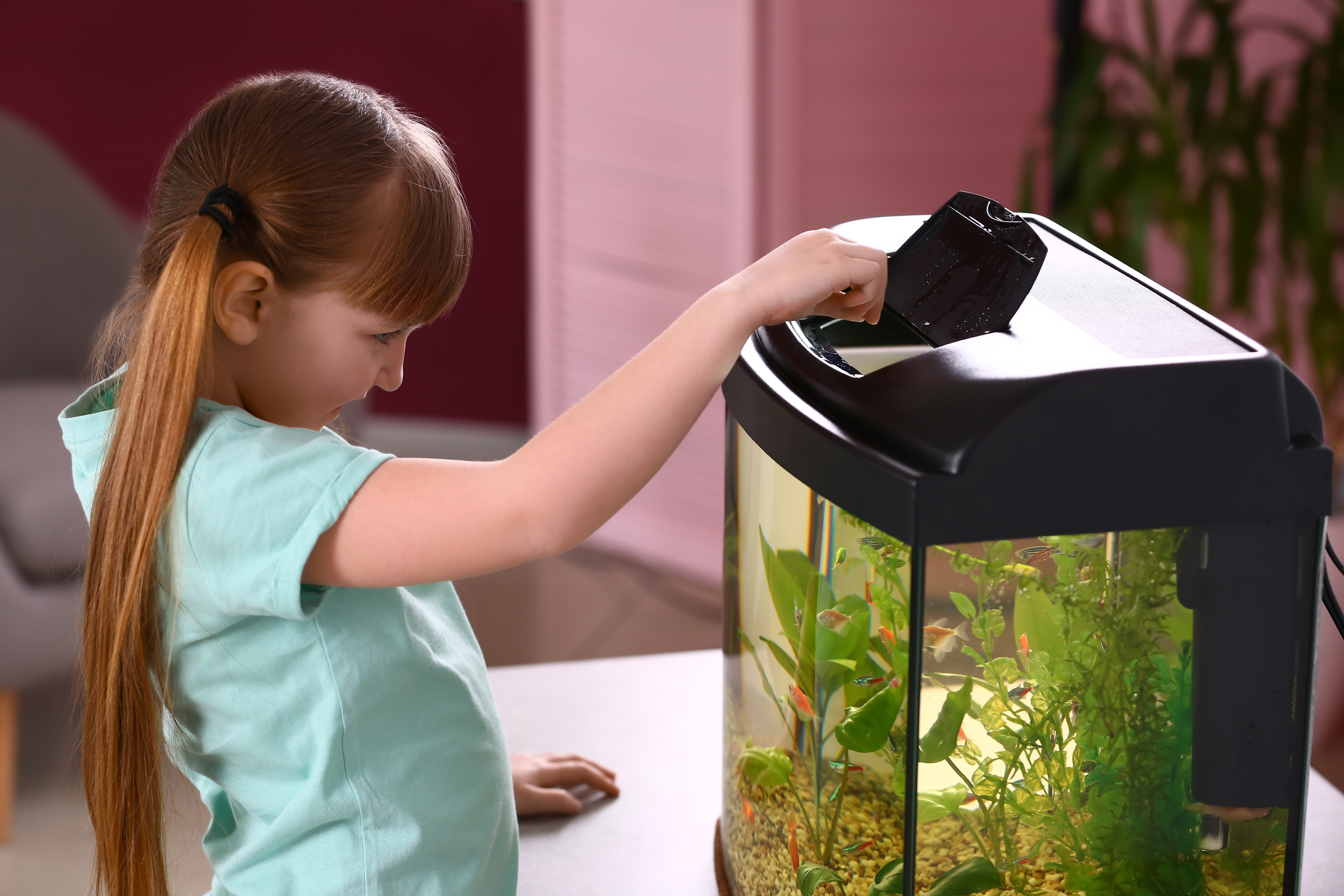At Your Service
Pet Age Staff //May 24, 2017//
BY SARA KEEGAN
Aquariums can make an excellent addition to a home or office, but servicing one’s own tanks can be time consuming and difficult. Providing maintenance services through a fish store can be a boon to a retailer’s revenue and build trust and lasting relationships with fishkeepers.
Some fish stores, such as The Fish Bowl and More, are making the most of the concept of providing maintenance services. The business, which is located in Pearland, Texas, began as a maintenance company before becoming a fish store.
“We’ve been doing maintenance and installation for about 22 years and have had a shop for about 10 years,” said Carlos Silva, manager of The Fish Bowl & More.
The store services about 175 aquariums on a monthly basis and is often sought out specifically for its excellent maintenance services. However, some customers may buy their fish and aquariums first and will later have to be sold on the maintenance services.
“There are a lot of customers that have catastrophes rather than doing the regular maintenance,” explained John Rogness, shift manager at A World of Fish in Minneapolis, Minnesota. He added that the shop has a fair number of customers who take advantage of their services, but he is always looking for more.
“You usually go and do a maintenance contract, and you go out twice a month, maybe once a month, so you’re constantly reviewing the aquarium,” Rogness said.
It’s a similar process for The Wet Spot Tropical Fish in Portland, Oregon.
“The initial maintenance fee [for a routine maintenance service] is $70, but depending on how big the tank is, how far away [the customers] live—that can depend,” said Matthew Rambo, maintenance specialist at The Wet Spot.
Maintenance services can become part of a fishkeeper’s regular routine, and it can help build relationships with both residential and commercial clients. These are often done on a case-by-case basis. These services include water changes, filter cleaning and general cleaning and are often done once or twice a month, but needs can change depending on the client.
“We like to have [the clients] come in and walk around the store; we have a lot of displays,” Rogness said. “Then we provide the products that achieve whatever they’d like to have.”
Bringing them into the store puts the client in contact with the products used for aquarium maintenance and puts a face to a store’s maintenance services.
The general consensus is that Seachem and API products are the best to use on maintenance visits. A World of Fish puts the decision on products in the hands of its clients, while The Wet Spot and The Fish Bowl agree on using Seachem and API. The Fish Bowl tries to avoid using too many chemicals on its service visits, but uses Prime by Seachem to condition both its freshwater and saltwater tanks. API’s Tap Water Conditioner is also a good option for detoxifying that water used in the tank.
A majority of maintenance visits that The Wet Spot goes on are pretty routine.
“We go there, we remove water, put new water back in, and sometimes bring fish to the client,” Rambo said.
Other services provided by The Wet Spot include installation, and even moving a tank from one location to another—it’s all about what the client needs at any given time.
“If they want plants or filter media, I’ll charge them on the service,” Rambo said.
Since maintenance providers are entering the homes and offices of their clients, it’s important to be aware of insurance issues.
“We’ve never encountered [any liability issues]; we occasionally have accidents, but most are covered by homeowner’s insurance coverage,” Rogness said.
Making sure your client has insurance is important to assess before initiating maintenance. For stores that may be considering adding aquarium maintenance to its repertoire of services, it’s important to have experienced staff.
“The problem is getting somebody who’s knowledgeable and going through the training process,” Rogness said. “It’s quite a long process—months, usually—before they go out on their own.”
Rambo is new to The Wet Spot, but is definitely not new to aquarium maintenance.
“I was a laboratory manager at Brigham Young University, had about 150 aquariums there,” he said. “I was the manager. I would maintain the facility; I would feed and breed them and keep the facilities clean.”
According to Silva, having a direct relationship with clients is also important when adding maintenance services. Building a professional relationship is key to determining the maintenance contract. Speaking one-on-one with the client will help the store decide with the client what he or she wants, what products should be used and how often maintenance is performed, as well as some maintenance that the client will be expected to do on his or her own.
“You can just be straightforward with the customer to make sure they understand what is required,” Silva said.
Though The Fish Bowl makes monthly visits, clients need to be told that they will have to clean out their filters and take care of their tanks in between maintenance visits.
“It’s not just hands off,” Silva said.
Overall, framing aquarium maintenance services as an added convenience to customers will result in successful revenue for the store, according to Cameo Konfrst, director of operations and marketing for The Wet Spot.
“The services provided by The Wet Spot maintenance have very positively impacted the bottom line,” Konfrst concluded. “Not only do we see growth every year in this area, but we are able to connect with a variety of local businesses and individuals while making fishkeeping easy and enjoyable.”



















